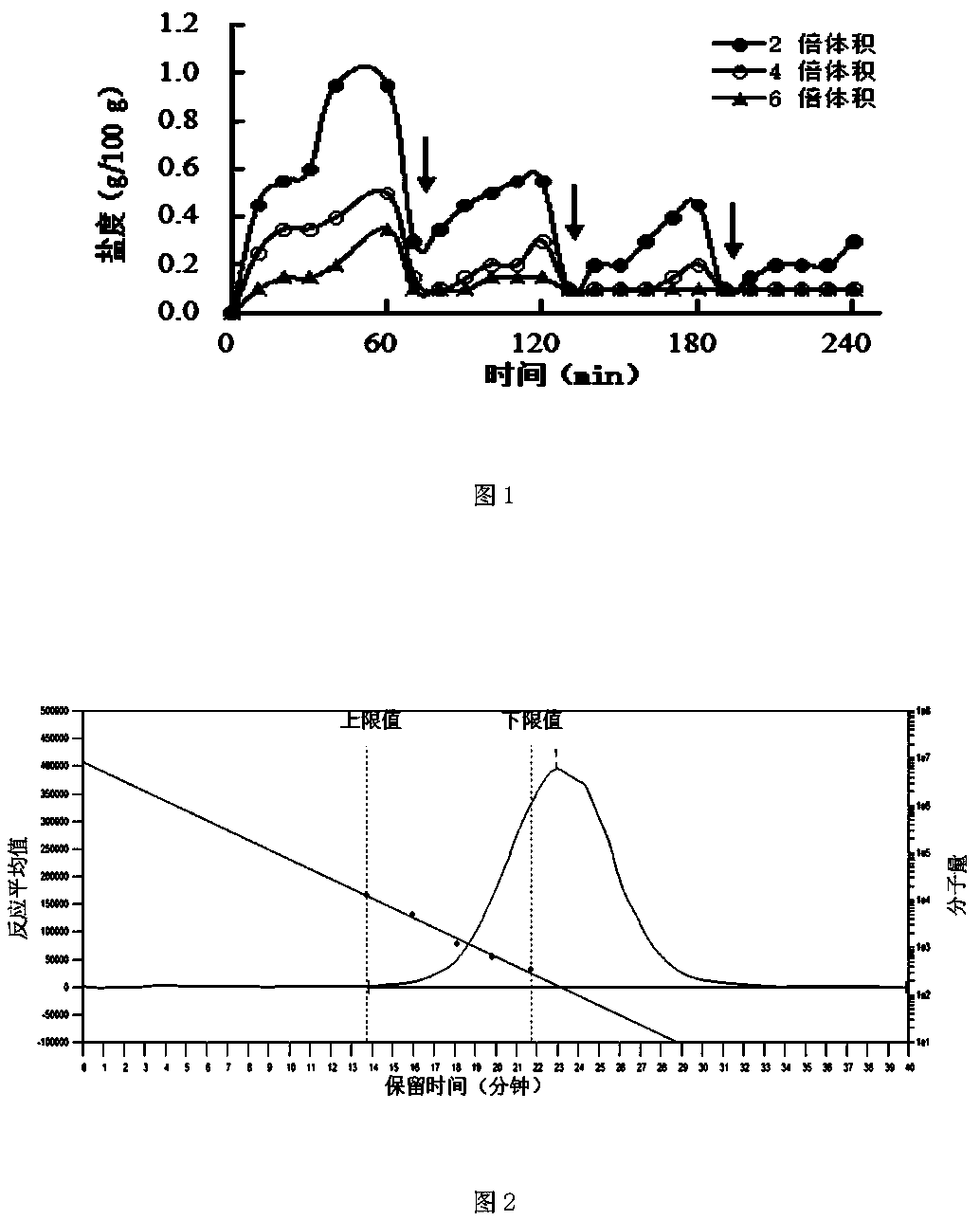A kind of production method of low-salt oyster polypeptide and oligosaccharide nutrition powder
A production method, oyster polypeptide technology, applied in fish protein components, food hydrolysis, food science, etc., can solve the problems that the value of oysters is not fully utilized, it is difficult to achieve the desired effect, and the activity of proteases is reduced, so as to prevent Severe wall sticking phenomenon, shorten cooling time, and reduce energy consumption
- Summary
- Abstract
- Description
- Claims
- Application Information
AI Technical Summary
Problems solved by technology
Method used
Image
Examples
Embodiment 1
[0043] Embodiment 1: the production of low-salt oyster polypeptide and oligosaccharide nutrition powder
[0044] (1) Desalination: Take 1 kg of shelled oyster meat, add 4 L of ice water to soak at 4 °C for 45 min, drain the water, then add 4 L of ice water to soak at 4 °C for 45 min, repeat 3 times.
[0045] (2) Sterilization of samples and protein denaturation: Homogenize oyster meat after soaking and desalting, homogenize at 5000 rpm for 10 minutes, and then place in a water bath at 90°C for 10 minutes to denature proteins while sterilizing samples.
[0046] (3) Sample cooling: Add 2 L of distilled water at 25°C to make the sample liquid temperature 40.2°C, and dilute the sample liquid at the same time, and the pH of the sample liquid is 6.58;
[0047] (4) High pH protease hydrolysis: adjust the pH value to 8.0 with 1 mol / L NaOH, place the sample in a water bath set at 45°C, add 8 g, 0.8 % (w / w) trypsin to protease After 1.5 h of solution, the pH of the sample solution was ...
Embodiment 2
[0056] Embodiment 2: Production of low-salt oyster polypeptide and oligosaccharide nutritional powder
[0057] (1) Desalination: Take 1 kg of shelled oyster meat, add 6 L of ice water, soak at 4 °C for 45 min, drain the water, add 6 L of ice water for 45 min, and repeat twice.
[0058] (2) Sample sterilization and protein denaturation: Homogenize the soaked and desalted oysters for 10 minutes at 5000 rpm, then place them in a water bath at 80°C for 15 minutes.
[0059] (3) Sample cooling: After high temperature treatment, add 1.5 L of distilled water at 25 °C, the temperature of the obtained sample liquid is 46.7 °C, and dilute the sample liquid at the same time.
[0060] (4) High pH protease hydrolysis: adjust the pH value to 8.0 with 1 mol / L NaOH, place the sample in a water bath set at 50°C, add 10 g, 1.0 % (w / w) alkaline protease Digest the protein for 1 h.
[0061] (5) Low pH protease hydrolysis: after high pH protease hydrolysis, the pH of the sample solution is 7.0 at...
Embodiment 3
[0065] Embodiment 3: the production of low-salt oyster polypeptide and oligosaccharide nutrition powder
[0066] (1) Desalination: Take 1 kg of shelled oyster meat, add 2 L of ice water, soak at 4 °C for 30 min, drain the water, add 4 L of ice water and soak at 4 °C for 30 min, repeat 6 times.
[0067] (2) Sterilization of samples and protein denaturation: Homogenize oyster meat after soaking and desalting, homogenize at 5000 rpm for 10 minutes, then place in a water bath at 100°C for 10 minutes, and denature proteins while sterilizing samples.
[0068] (3) Sample cooling: Add 2 L of distilled water at 28°C to make the temperature of the sample liquid at 55°C, and dilute the sample liquid at the same time. At this time, the pH of the sample liquid is 6.58.
[0069] (4) High pH protease enzymatic hydrolysis: adjust the pH value to 8.0 with 1 mol / L NaOH, place the sample in a water bath set at 55°C, add 8 g, 0.8 % (w / w) trypsin to protease solution for 1.5 h; at this time, the ...
PUM
 Login to View More
Login to View More Abstract
Description
Claims
Application Information
 Login to View More
Login to View More - R&D
- Intellectual Property
- Life Sciences
- Materials
- Tech Scout
- Unparalleled Data Quality
- Higher Quality Content
- 60% Fewer Hallucinations
Browse by: Latest US Patents, China's latest patents, Technical Efficacy Thesaurus, Application Domain, Technology Topic, Popular Technical Reports.
© 2025 PatSnap. All rights reserved.Legal|Privacy policy|Modern Slavery Act Transparency Statement|Sitemap|About US| Contact US: help@patsnap.com

